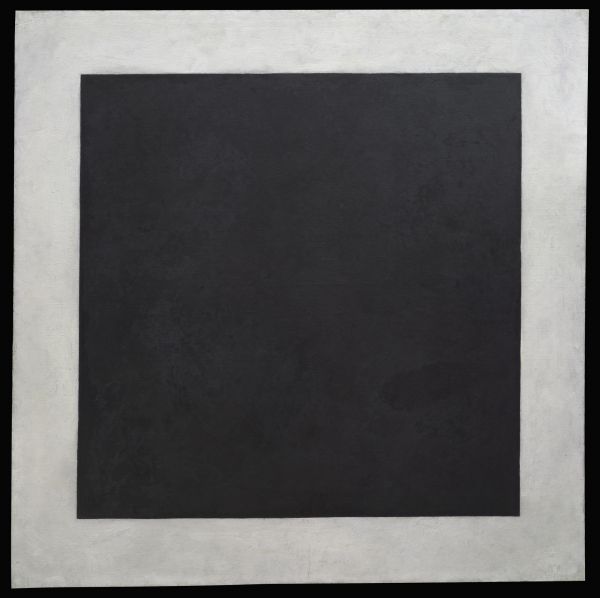|
|
Black Square. Circa 1923

Malevich Kazimir,
Oil on сanvas
106 x 106
State Russian Museum
Пост.: в 1936 от наследников (Ленинград). Передана в 1977 МК СССР
Annotation
Kazimir Malevich employs the simplest geometric figures to construct a new reality, which does not have anything in common with nature, where the most important thing is the relationship between time and space. Malevich’s painterly formulae are born in these combined forms as the basic principles of the language of his art. These formulae had a sacred meaning in the artist’s consciousness akin to that of a medieval alchemist.
The initial version of Black Square was first shown at the 0.10. Last Futurist Exhibition in Petrograd (1915). It was hung in the right corner of the hall, where icons are traditionally hung in Orthodox homes.
Malevich’s “icon” in this way became a symbol of the new era. The artist himself called the work “a bare icon without a frame.” During Malevich’s lifetime, Black Square became a specific symbol of both his art and the Suprematist movement.
Author's Biography
Malevich Kazimir
Malevich, Kazimir Severinovich (1878, Kiev - 1935, Leningrad)
Painter, graphic artist, writer on art, portraitist, landscapist, abstractionist. Studied at the Kiev School of Art (1895-1896) and Fyodor Roehrberg's studio in Moscow (1906-1910). Contributed to exhibitions (from 1905). Contributed to the exhibitions of the Moscow Fellowship of Artists (from 1907), Donkey's Tail (1912), Target (1913), Der Blaue Reiter (1912), Salon des Independants (1914), Tramcar V. First Futurist Exhibition (1915) and 0,10. Last Futurist Exhibition (1915-1916). Designed the sets and costumes for the Futurist opera "Victory Over the Sun" (1913). Member of the Union of Youth (1910) and Jack of Diamonds (1910, 1916). Founded the AFFIRMES OF THE NEW ARTgroup (1920). Worked for Department of An People's Commissariat of Education (1918-1919). Director of the Museum/Institute of Artistic Culture in Petrograd/Leningrad (1923-1926).

